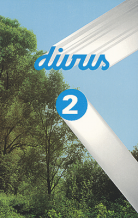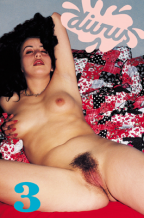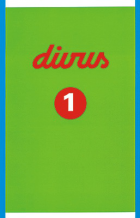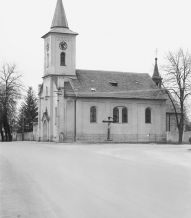The editors of Umělec have decided to come up with a list of ten artists who, in our opinion, were of crucial importance for the Czech art scene in the 1990s. After long debate and the setting of criteria, we arrived at a list of names we consider significant for the local context, for the presentation of Czech art outside the country and especially for the future of art. Our criteria did not include success, prizes, participation at exhibitions and media popularity because this kind of criteria could not be applied to the turbulent 1990s. What we were looking for instead was a certain inner strength, authenticity and uniqueness in relation to the contemporary art context. An act, a gesture and clear timelessness can be detected in the following artists who, in our opinion, will influence the first decade of the new millenium. (Although it may not yet be apparent.)
Umělec editors: Lenka Linduarová, Vladan Šír, Ivan Mečl, Tomáš Pospiszyl and Karel Císař
Matin Zet (1959)
Martin Zet, sculptor, painter, performer and video artist, is almost invisible yet all of his works and events are significant. His artistic endeavors, though it may sound affected, have an inherently humane and self-reflective quality encoded within them. This quality is set against the background of a society that has spun out of control. Zet is the only Czech performer who has made his mark in the memory of top Czech politicians: He organized a march of Czech lions (the historic emblem of the Czech state) to the Prague Castle during the presidential elections of 1997. During the Public Art Project, he placed his video installation of the virtual space in a subway train into an actual subway train. His lesser-known video projects are akin to the work of Jimmie Durham whom Zet has met at a number of international symposiums. Zet’s status of an artistic nomad, traveling around the world, responding to specific situations at a specific time, is crucial for understanding his work. And for Zet it is crucial to know that he considers art to be his life. Sea Drawings, the drawings he makes in tandem with natural elements, make up his most unassuming and yet one of his strongest works. They are often impossible to separate from the natural event itself. Most of Zet’s works are difficult to describe because they represent a metaphysical story full of emotion, euphoria and inexplicable mystery. His works can be, in a global context, classified as anthropological events mostly occurring outside the exhibition space and represent the spice in all pop trends.
Filip Turek
Filip Turek is often seen as an enfant terrible by Czech curators, and it is amusing to include his work as a complement to a collective exhibition of some hip and hot theme. Turek is mostly involved in computer-generated art, performances and secret events. He parodied postmodernism in a time when it was still treated like the holy cow. With the exception of his website, he intentionally avoids showing his work. He earned the reputation of being a provocateur and one of the few artists who had an exhibition prohibited in the 1990s by showing a video loop of his own anus endlessly excreting its waste. Filip Turek is an unrivaled foil for all wannabe provocative and speculative artists. As a solitary artist, he finds himself in opposition to the current rules. He indulges in taboo themes with a kind of obsession. Feces and sexual deviation are only a couple of examples. Turek, however, is also a skilled designer and Internet surfer with various virtual bodies. He is gradually achieving the standing of being a mystifying artist, and one cannot say with any certainty what his identity really is.
Jiří Surůvka
Jiří, who is originally from Ostrava’s rough coal-mining region, became a hero of Czech art within a few years and has established himself as a painter, performer and entertainer. It is hard to say whether his sophisticated, popular presentation is his image or his nature. The same is true of his paintings: Are they infantile, naive or sophisticated? Even in his performances and theater sketches he seems to be intentionally searching out the limits of awkwardness and parody, kitsch and lewdness, vulgarity and snobbishness. He mocks everything around him, including himself, functioning as a litmus test for administrative arguments while protecting the good from the evil like Batman in whose disguise—despite weighing 120 kilos—he often dresses. Surůvka injected spontaneity and the courage for artists not to take themselves so seriously into the local scene—the courage to say anything under any circumstance. He also contributes to deconstructive tendencies that manifest themselves in energetic arrogance aimed at the exhibition routine. Surůvka may gradually become a Švejkian mascot of production. His contribution to the past decade is, however, indisputable.
Vladimír Skrepl
Nobody has organized a solo exhibition for Vladimír Skrepl because everybody is worried that the result might be so terrifying that, after the event, it would no longer be impossible to make art. Skrepl’s art—mostly paintings and drawings—has no nature, mannerism, style, is not highbrow, and, at first sight, lacks all reason. It is unorthodox, free, and incrediblely unesthetic. It represents a question, floating above the horizon, concerning the era after the grand narrative, or, rather, after the era after the grand narrative, an era of waiting for artistic reversals previously unconsidered. Skrepl is an absolutely exceptional figure in contemporary Czech art and for this reason none of the critics even attempts to classify him. Vladimír Skrepl is phenomenal at making unbearably ugly artifacts whose extraterrestrial anti-esthetics exude horror as well as excitement. Furthermore, his works are perverse, unappealing, aggressive, strange, offensive and submissive, inartistic and calculated, political, sexist, appalling, magnetic, content-free, stupid, unpredictable, fascinating, awful and excellent. Impossible to decode, like the perfect game.
David Černý
It’s not quite clear whether David Černý only thinks of his own immortality or whether he also sometimes thinks of the things that come attached: the consequences for humankind, which, in his case, is artistic contribution. Although Černý is one of the most visible artists in the Czech Republic, and has gradually become a media star, this fact is not at variance with the quality of his objects. One could say that David Černý is the only contemporary monumental and figurative sculptor. He often deals with Czech history, something that is not only risky, but also downright unacceptable. Černý is political in the truest sense of the word; he is point-blank and the content of his work is terse. He won his greatest success in the local scene when he painted a Soviet tank/monument pink shortly after the fall of the Iron Curtain. Authorities then repainted the tank army gray but members of parliament helped paint it back pink again. This story has no local precedence. David Černý realizes simple ideas with ease, and, oddly enough, they all work out well in the end. He could be called the Jeff Koons of Czech art, but this comparison falls off the mark: Černý is much more straightforward. Who else would have the courage to make a bronze crib detailing Czech history spanning from the legend of the Golem to the Rolling Stones visiting President Havel?
Markéta Othová
Markétha Othová’s work makes her one of the most subtle and mysterious artists working today. Through her hands she is able to transform her black and white photographs into abstract images. Her concepts are sometimes narrative: She can inconspicuously work up a story brimming with personal memory and turn it into a new visual sign for a specific place and time. She works with personal experience, with the symbols of intimacy, as well as everyday objects, which she melds into her own world, tempering them with her own language. What her images are hiding, what is chance and what is an acute message is intentionally ambivalent. It’s as if Markéta Othová succeeds in taking pictures of dream sequences or of our notion of what a dream is. Her large formats emphasize the deepness of space, where the dreams take place. Her images contain something the lens has failed to capture, the viewer cannot see, but still there’s the feeling of tangible absence. Her photographs do not have a specific signature yet they are inimitable. Perhaps it’s due to her abounding sensitivity and the intensity of her dreams. We forgot something long, long ago and Markéta Othová is inconspicuously unveiling it.
Ivan Vosecký
The painter Ivan Vosecký gives the impression that he makes his art just as naturally as he speaks or sleeps. Yet his works are relevant because they deal with elemental human issues like God, love, politics, ecology, and drugs. Vosecký uses proclamation slogans done in advertising lingo. Since his questions are too tragic, he vilifies them by encasing them in a banal form—sticky tape, polystyrene. In his paintings, he regresses into child-like manifestations and uses popular comic language. It might appear as if he wanted to save the world but perhaps it is only a speculation by a substantially contemporary and aware artist. His sincerity, however, is so convincing, and his communication with viewers is so direct that one cannot but believe that Vosecký is the Don Quixote of the arts, while risking all the while being seen as ridiculous. It is as though he wasn’t supposed to live in this era, and yet he still tries to wake up the bad conscience of a world full of MacDonalds and ozone holes. Can the language of art today still do this? Vosecký is vehemently trying to do so.
Jasanský—Polák
The status of photographers Lukáš Jasanský and Martin Polák in the 1990s art scene has not yet been fully appreciated. Their uniqueness lies in their alternation to all local and periodic tendencies, in their absolutely insufficient promiscuity. Their black and white photographs— which they conceive as one author—and the viewer never find out who pushes the button, do not capture the magic of the inadvertent but instead the stupidest images and situations. It is peculiar that their photographs wind up in a position outside irony and parody. They look like completely idiotic jokes a storyteller continues to flub up. They photograph desolate Czech reality, Czech people, cities, cars, slippers, factories. They, however, do not create Kafkaesque illustrations. Instead they conjure up strange images difficult to penetrate. It is incredibly hard to say why Jasanský and Polák succeed in creating the tragic, comical and ephemeral atmosphere that a completely cursory look would normally lack. It’s as if they concentrate on scrutinizing from the periphery, see something we perceive only subconsciously, and then focus on it, enlarge it and cover up the much more beautiful and not so depressing views. The art of the two photographers stands on their ability to capture the singular and the unique but gloomy insights that would otherwise fade from memory. Depressing esthetics would be good way to describe this.
Petr Nikl
The last few years have showed us that painter Petr Nikl, who could theoretically be considered a ranked and accomplished artist, is, in fact, one of the most significant Czech performers without whose inexhaustible initiative a number of interesting projects would have been impossible to realize, like the visual theater with South African actors with whom he couldn’t communicate verbally. Nikl applies his racy and extroverted way of communication—based on a number of visual surprises and sounds—in the kind of theater performance that brings us back to the rituals deeply rooted in our common memory. Their content includes everything from puppet plays for children and transvestite shows to cheeky improv. They are fascinating and impossible to grasp. Although Nikl maintains a certain style and patterned, comprehensible use of his tools, he still succeeds in transforming himself like a long-term schizophrenic who is, more than anything, crazy about art. Nikl’s identity seems to be unclear, but this not the point in his performances because they are based more on visual alterations and games. This kind of work, combining the complex language of visual art with folk entertainment, is absolutely unique, because art is often not amusing at all.
Krištof Kintera
The artistic output of Krištof Kintera, though there has not been much, is usually quite strong. Perhaps it is become he is using a global language in his work as if it naturally belonged to the international context of the past decade. Precise formal elaboration of ideas plays an important part in his work. Kintera possesses the ability of a sophisticated designer. His work has almost unambiguous meaning and may be described as a striking example of contemporary art. The story of It, his object with an illustrative title, is an example of how to perceive art in general, but also specifically, through It, a thing, a product, a mystery which can be placed anywhere like a shop window, a gallery, under one’s bed—whether we expect It there, want It there or it’s simply the first meeting with It. Krištof Kintera strolls through the world of art as if it’s perfectly natural for him in an era of unified colors and multinational galleries. Kintera is a representative of the contemporary, genetically unmodified artists. His talkers—little figures without faces—do not complain, as it might seem at first sight. They simply comment on a diverse world they do not need to understand, but, despite that, must live as one of its components.









































 New book by I.M.Jirous in English at our online bookshop.
New book by I.M.Jirous in English at our online bookshop.
Comentarios
Actualmente no hay comentariosAgregar nuevo comentario